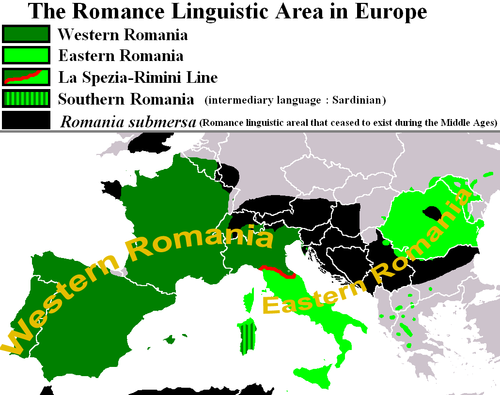| Southern Romance | |
|---|---|
| Geographic distribution | Corsica,Sardinia,Roman Africa |
| Linguistic classification | Indo-European |
| Subdivisions |
|
| Language codes | |
| Glottolog | sout3158 |
 Sardinia as part of the Southern Romance group in Europe | |
TheSouthern Romance languages are a primary branch of theRomance languages.
According to the classification of linguists such as Leonard (1980) and Agard (1984), the Southern Romance family is composed ofSardinian,Corsican, and the southernLucanian dialects.[1]
This theory is far from universally supported. In fact, the majority of linguists classify Corsican, includingGallurese andSassarese as its dialects, as part ofItalo-Dalmatian and closely related toTuscan or the centro-southern Italian dialects,[2][3][4][5][6][7] because of the island's considerable degree of tuscanization during theMiddle Ages, leaving Sardinian as the only remaining representative of the branch once theAfrican Romance dialects had gone extinct,[8] unless the southern Lucanian dialects are also classified as part of this branch, as they show some important traits in common with Sardinian.
Ethnologue and Glottolog, which support the Southern Romance theory,[9][1] propose the following classification (with Glottolog considering South Lucanian and Sardo-Corsican to be branches of Southern Romance and Ethnologue considering Sardo-Corsican to be synonymous with Southern Romance), which is not endorsed by other linguists in light of the structural differences between these languages. Corsican, for example, is otherwise classified as an Italo-Dalmatian language, and Gallurese, like Sassarese, as a (southern) Corsican dialect (with influences from Logudorese Sardinian) or a transitional variety between Corsican and Sardinian. However, the southern dialects of Corsican as well as Gallurese and Sassarese display Sardinian-like vocalism (seeRomance languages § Dialects of southern Italy, Sardinia and Corsica).
Other classifications include in the family the extinct group ofAfrican Romance, which is known to have been used bypopulations of North Africa pertaining to the Roman sphere of influence during at least the first centuries after thedissolution of official institutions of the Roman Empire, and developed underthe rule of the Byzantine Empire in the area.
 | This article aboutRomance languages is astub. You can help Wikipedia byexpanding it. |